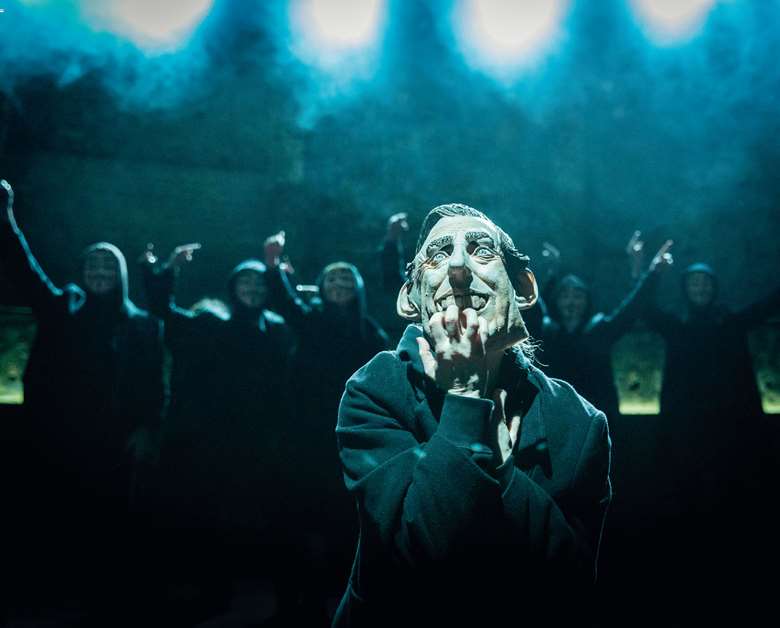Practitioner focus: Rupert Goold
Keith Burt
Saturday, May 1, 2021
Since the late 1990s, Rupert Goold has been gathering a reputation as an exciting, innovative and provocative theatre director. His productions are exhilarating, and he looks to take risks in the work he does. As such, his work has often divided opinion. But nevertheless, many of his productions have achieved incredible success on the West End and Broadway.

Jojan Persson
He is currently the artistic director of the Almeida Theatre, having previously been associate director of The Royal Shakespeare Company (RSC) and artistic director of the Northampton Theatre. During his career, his list of achievements appears almost limitless. According to the Almeida Theatre website, Goold has directed ‘revivals, opera, musicals, new plays, classic texts, farce, pantomime, youth theatre, installation work, comedy and Shakespeare (including two films) around the world and for a wide range of commercial and subsidised organisations.’
Notable productions
Rupert Goold has been involved in some of the most notable productions in recent history. When he directed The Tempest at the RSC, he started the play with a radio presenting the last moments of the shipwreck along with projections on the storm on a gauze spread over the stage. He also had Ariel first appear as a disembodied head, then as a ghastly figure dripping in blood and bones. His Macbeth at the RSC was equally visceral, intense, and bloody, set in an undefined and threatening central European world. His production of Medea at The Almeida transposed the play into a middle-class modern world. The play deliberately made the audience feel uncomfortable, focusing on the fact that someone from the audience's own world could be capable of killing their own children.
Key features of productions
- pre-show
- projections
- soundscapes
- bold and symbolic costume design
- unusual lighting effects and stage design
- horror film effects
- controversial content
- deliberate audience discomfort
- transposing plays to different contexts
- using non traditional spaces within the theatre for performance.
Key influences
Goold was influenced by the work of Peter Brook. There are a lot of similarities and parallels between Brook and Goold in terms of both their approaches to working in theatre and their variety of repertoire. In response to the famous quote from Peter Brook, ‘I can take any empty space and call it a bare stage. A man walks across this empty space whilst someone else is watching him, and this is all that is needed for an act of theatre to be engaged,’ Goold said, ‘That may very well be true but when the walker stops and turns directly to the watcher, when the journey is interrupted, this is when theatre really engages me.’
Activity 1
A key element to the work of Rupert Goold is reimagining a text to a new, often gruesome, context. This is a process called transposing. Think of a production that you are working on at the moment and consider how the play could be transformed into a new context. In a true Rupert Goold style, try to take it to an extreme and consider how every part of the production can be transposed: characters, setting, context, content and meaning.
Activity 2
Another key element to any Rupert Goold production is the idea of pre-show. Goold has used all sorts of different ideas for pre-show. He has used a really engaging set design that raises the audience's interest from the moment they enter the space. He has used more complex ideas such as using the shipping forecast to predict the storm that starts the play The Tempest. Thinking about the production you're currently working on, what pre-show could you create for your audience? Think about what key messages you want to communicate to your audience, what they need to know before the performance starts or the atmosphere you want to create in your production.
Activity 3
Rupert Goold uses a lot of non-traditional performance spaces as part of his productions, including the auditorium and the audience themselves. In his production of The Tempest, Caliban made their first entrance from behind the audience, coming to the stage down the aisle dragging a carcass of a dead shark.
Act out the first entrance of the main character in the play you are working with. Your aim is to use as much of the non-traditional theatrical space as possible. Enter from behind the audience, walk through them, deliberately use their space but avoid talking to the audience directly. Push the boundaries of what you can do with these non-traditional performance spaces within the theatre.
Activity 4
Provocative, symbolic, and intimating stage designs are a big part of Rupert Goold's approach to making theatre. Thinking about the text you are working with at the moment, design a set for the first scene of the play. Remember to include symbolic details of your transposed context, opportunities for projection and the use of technology. Try to go beyond the stage and consider how you could involve the auditorium as a stage as well. Also try to incorporate a soundscape that could accompany the stage design.
Keith Burt has been working in Drama education for 20 years. Graduating from the Central School of Speech and Drama, he went on to a Masters in Drama and Education at Middlesex University. An experienced and established head of Drama and former artistic director of a theatre company, he is also the author of the website ‘Burt's Drama’.

